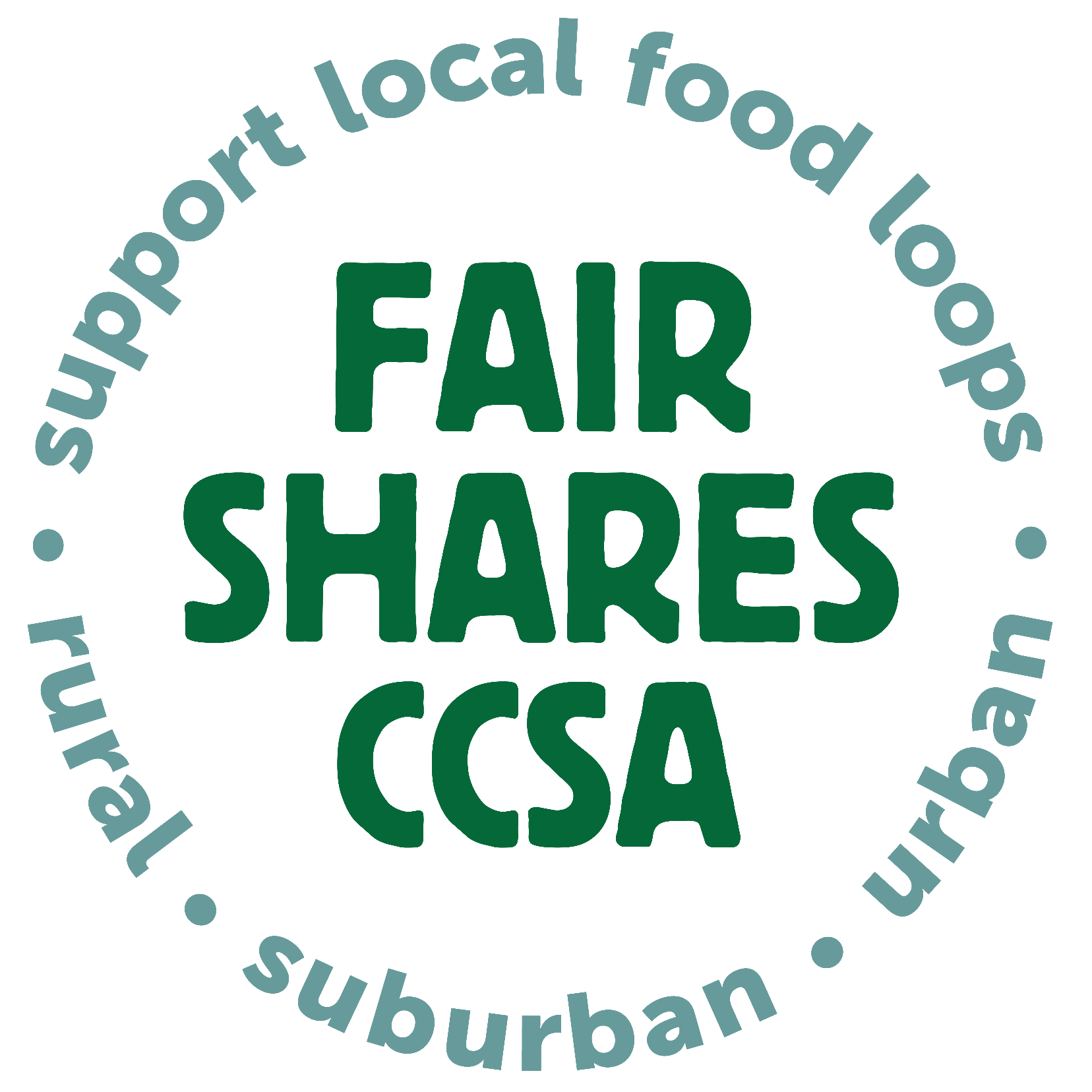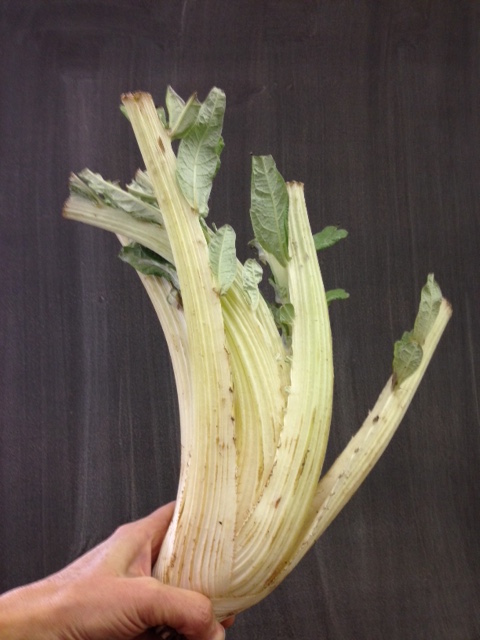My first experience with cardoons came in Italy, which may explain why they give me a warm, fuzzy, romantic feeling whenever I consider them. While at the second Terra Madre event in Torino in 2006, the group we were lodged with was introduced to Bagna Cauda, a traditional Piemontese dish of anchovies, garlic, butter, olive oil and cream that is cooked to a decadent puree and used to cook an array of veggies and meat in, tableside, like fondue. This spurred numerous Bagna events stateside over the next several years, but more on that later.
One of the vegetables included in the bagna brigade was the cardoon, which had been cleaned and boiled as described in this NY Times article. The vegetable was new to me, but the flavor and texture was familiar–artichokes! Yum…especially with the garlicky, salty creamy richness of the bagna. Since that visit to Italy, I’ve only had cardoons a number of times here in the US, and was thrilled to find some local growers with Lee and Ingrid Abraham at Berger Bluff. The cardoon (cardone in italiano, or cardi for plural) grows on a stalk like celery–more like celery on steroids–and needs to be de-stringed like celery. A parboil to soften and remove the bitterness prepares them for whatever delicious recipe you choose. Here are links to a couple that look good:
http://www.foodnetwork.com/recipes/mario-batali/baked-cardoons-roman-sty…
http://www.ciaoitalia.com/seasons/20/2018/fried-cardoons
And of course, there’s Bagna Cauda, which in Italian means Hot Bath. The traditional preparation is long and slow, taking hours and hours (and many friends, family members and bottles of prosecco and red wine) to create a truly memorable experience. Every recipe I find in English rushes the procedure by chopping and/or processing the garlic and anchovies. I also notice that none of these recipes include savoy or napa/Chinese cabbage, which for many of us is the best part.
I have included below the original recipe with instructions from my former neighbor, whose Italian grandma passed it along to his mother, and she passed it to him. (For the record, we NEVER chopped or processed it–we were purist bagna snobs.)
Bagna Information (from Ma Primoli)
You will need a heavy fry pan to make Bagna on stove. If you have an old cast iron black fry pan, great. If not just use what you have. Cook in old clothes or use an apron…the oil can be a mess.
You will also need a potato masher. Sometimes these are used to rice potatoes. People who mash real potatoes used to use a potato masher while today people use an electric mixer.
Recipe is for about 10 persons*…
Put 1 pt of olive oil in fry pan on a low temperature. You do not want the oil to get too hot or your garlic and stuff will burn and that will not be good tasting.
Add 1 cup of garlic to the oil using the potato masher to mash the garlic. (We always used whole garlic cloves, already peeled, to equal 1 cup. Part of the cooking of the bigger pieces of garlic is getting the garlic to breakdown and flavor the oil).
Be sure you don’t heat the oil too hot and remember it takes quite a while to mash up the garlic. You are not trying to brown it, but just slowly cook it down. It is a constant stirring process.
Once the garlic is all mashed and blended into the oil, then add a 13 oz can of anchovies packed in oil (we often just used 7 2-oz. cans, including the oil). Again you keep stirring with the masher and mash up the anchovies. Remember it is going to look like a gravy and people really should not see anchovies. Keep going until you don’t see the bones, which look like hairs when you look closely.
Add the 3/4# butter. Again keep your temp low and constantly stir.
Once everything is all mixed you can slowly add the 1/2 pt of whipping cream. I know you will add extra cream. Remember it will look like a gray gravy.
Add some pepper. Do not add salt as your anchovies are salty.
Once it is done we always put it in an electric skillet (or a couple, depending how many people). Be careful of cords and blowing fuses.
You can clean and prepare your vegetables the day before and keep them in zip lock bags. We always had plenty of people on hand to help prepare the veggies, while we all took turns at the stove.
If you are making 1 batch these are the approximate amounts of things you will need…
1qt whipping cream (we never used whipping cream, just half and half)
5 # meat (good sirloin, you can have butcher cut it or partially freeze it and cut it yourself with a sharp knife or electric knife)
2 heads of savoy cabbage
1 bag of small onions, quartered, separated
1 # mushrooms
3 or 4 green and red peppers
1 head of celery (this is where the cardoons stand in beautifully)
1 head of cauliflower, broken into bite size pieces
6 to 8 loaves of french bread (sliced a bit thicker than regular bread)
Sara’s notes:
– We always started cooking at 3:00p.m. with Spritz–that’s prosecco with a splash of Campari. Serve red wine with the meal, which isn’t until almost 7p.m. Did I mention that this is a long party? We even made bagna dance party CDs.
-Everyone gets their own fondue fork, and be careful, because if you try to steal someone’s chunk of sirloin, you might lose a finger.
-Pay attention to what food you put in there–some of it needs to cook for a bit, but you don’t want to cook it all to death, so plan on rotating your cooking so you can clear out the skillet every once in a while.
-Fennel is delicious cooked in here, and we just happen to have fennel in the shares…
-*This always leaves lots of leftovers, and serves way more people than it says–look at the quantities of food here, for goodness sake!
-As you have probably noticed, this isn’t diet food, it’s a celebration, so enjoy it.

